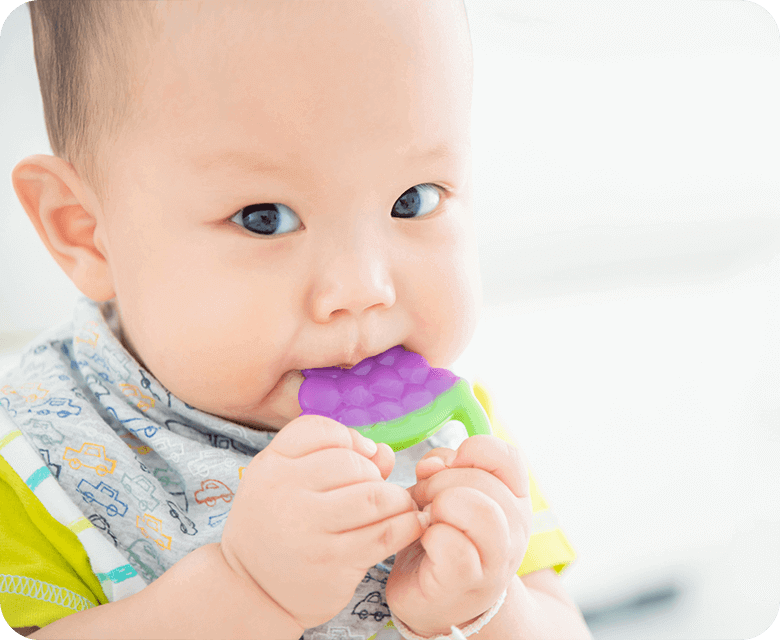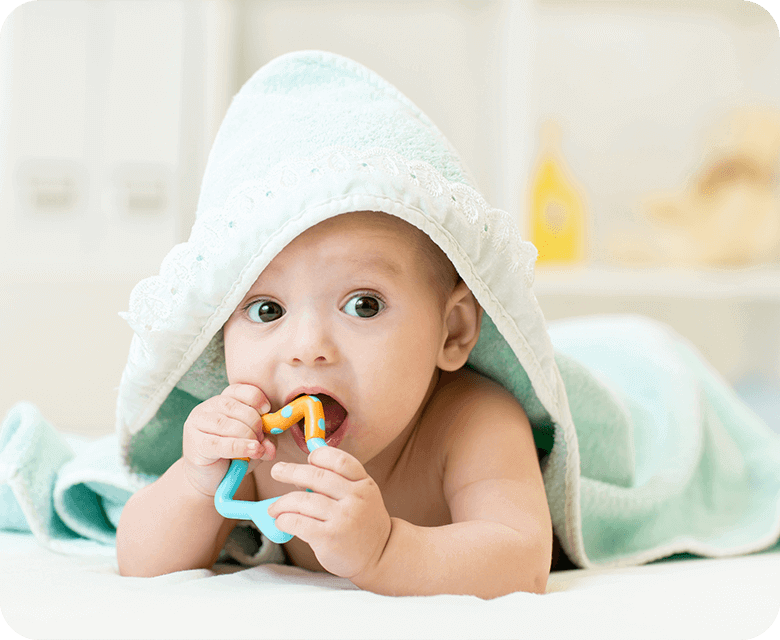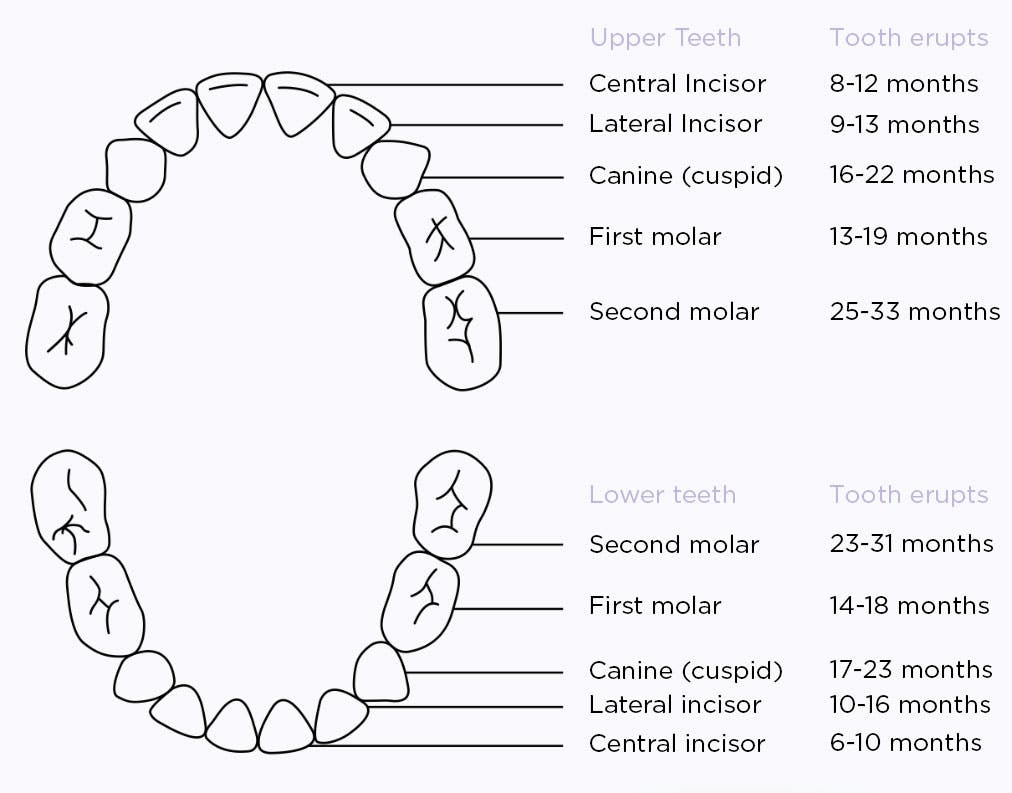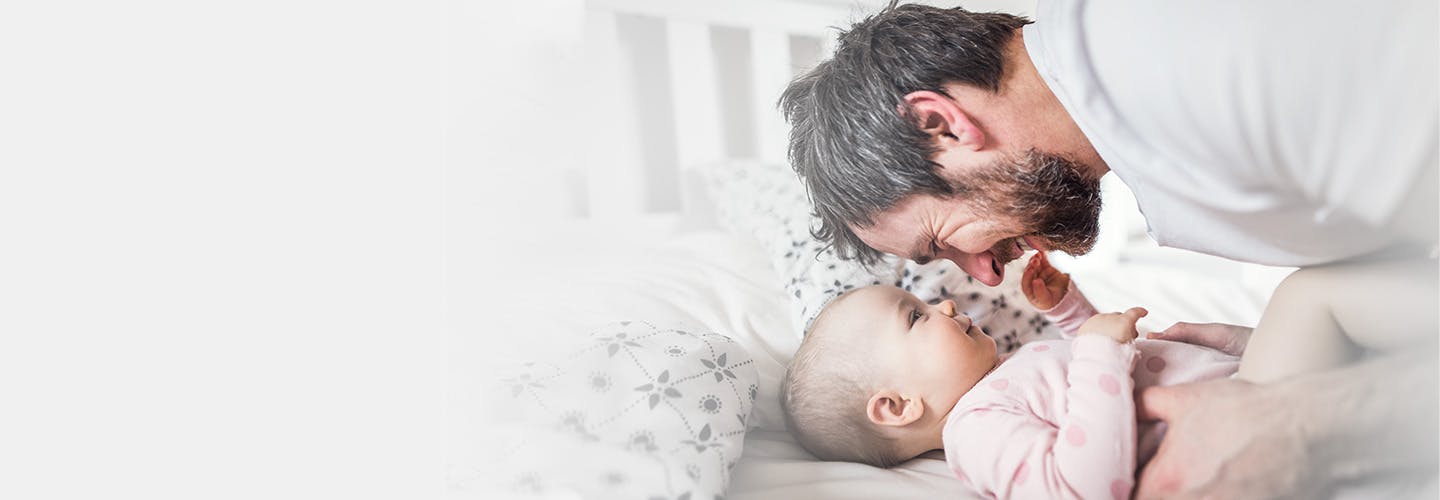Panadol Regular
Panadol Rapid
Panadol Extra
Panadol Osteo
Panadol Childrens - Liquid
Children’s Panadol Colourfree Liquid (1 Month – 1 Year)
Children’s Panadol Elixir (5 Years – 12 Years)
Panadol Childrens – Suspension
Children’s Panadol Colourfree Suspension (1 Year- 5 Years)
Children’s Panadol Colourfree Suspension (5 Years – 12 Years)
Panadol Childrens – Suppositories
Children’s Panadol Suppositories (6 Months – 5 Years)
Children’s Panadol Suppositories (5 Years – 12 Years)
Panadol Childrens – Chewable



When your baby is teething, it can be hard for them and for you. Learn how to spot teething signs, what to expect from this stage of development and how you can make your infant more comfortable.
Is your baby teething?
Here’s how to help them through it.
As a parent, the best way to help your infant is to be on the lookout for common teething signs, understand what’s happening and learn some remedies that can help ease this transition for your little one.
Your baby’s first tooth is a milestone you’ve been eagerly awaiting, but for your infant, it may not be quite so exciting. While your baby experiences the symptoms of teething, they don’t have the words to tell you what they’re feeling.
Knowing the most common signs can help you identify when your baby’s teeth are on the move.

Top 3 teething signs
1. Dribbling: Is your baby drooling more than usual?
2. Gnawing: Is your child chewing on everything in sight?
3. Crying: Has your little cherub turned into a grump?
What are the symptoms of teething?
Some teething symptoms, like your baby gnawing on everything they can get their hands on, may be obvious. Others, however, can be confused with other conditions. You may wonder, for example, if your infant’s cheeks are flushed, is it a fever, teething or something else? That’s when you’ll want to look for a grouping of symptoms that may point one way or another.
Many of the symptoms make teething an uncomfortable process—although your baby may be lucky and feel little or no discomfort at all. Learning the most common teething signs will help you ease their symptoms if and when they do appear.
Common teething signs you may notice:
- Redness or a cyst on the gum: As the tooth pokes through the gum, you may see what is known as an eruption cyst, which looks like a blue- or grey-coloured bubble on your baby’s gums. Don’t be alarmed as it will usually go away on its own. For your child, this is typically an uncomfortable stage of the baby teething process.
- Flushed cheeks and low-grade fever: While it doesn’t usually cause a fever, teething may bring your baby’s temperature up slightly and result in a flush to their cheeks. Note that any temperature above 38°C is likely to be caused by something else and should be communicated to your child’s doctor.
- Rubbing or tugging on their ear: The pain from your baby’s gums can radiate out towards their cheeks and ears. Your infant might rub their cheek or tug on their ear trying to rid themselves of the pain, not knowing what it is. Just be aware that tugging on their ear can also signal an ear infection, so get in touch with your doctor if it goes on for a long time or if your little one also has a fever.
- Dribbling more than usual: The irritation in their mouth can make your baby drool more. The slobber is usually more of an inconvenience for you than a problem for your infant, but the bacteria from their saliva can sometimes cause a skin rash around their mouth, chin, cheeks and neck.
- Gnawing and chewing on objects: You’ve already seen how your baby explores their world by mouth. Every new object goes in as they try to figure out what it is. When they’re teething, this takes on a whole new dimension, as now everything they can get their mouth on is a potential soother of gum pain.
- Being more irritable than usual: Well, you would be too, if you had new teeth working their way up through your gums. Remember, your child has no way to communicate their distress to you other than by crying. It can be stressful for parents, but it will pass.
What is the typical baby teething age?
Your baby may start teething as early as four months old, with all 20 baby teeth usually coming through by the time they are two or three. But if your little one’s teeth are a little slower to appear, there’s no need for concern. Bear in mind that babies all develop at different paces and they won’t all get their first teeth at the same age.

Your baby’s primary teeth begin to develop while they are still inside the womb. When they were born, your baby already had a complete set of 20 primary teeth (10 upper and 10 lower) hidden in their gums. Teething is their journey as they ‘erupt’ and break through the gums. These first teeth are also known as primary, baby, milk or deciduous teeth.
The process of teething can take up to eight days for each tooth, which includes four days before and three days after the tooth pushes through the gum. Baby teething typically starts with their bottom two front teeth, followed by their top two front ones, and then their other teeth along the sides and back.
While there’s no standard baby teething age, the following babies teething chart may help you get a general idea of what to expect.
Babies teething chart for tracking development
1. Central Incisor |
8-12 months |
2. Lateral Incisor |
9-12 months |
3. Canine |
16-22 months |
4. First Molar |
13-19 months |
5. Second Molar |
25-33 months |
6. Molar |
23-31 months |
7. Molar |
14-18 months |
8. Canine |
17-23 months |
9. Incisor |
10-16 months |
10. Incisor |
6-10 months |

How can you soothe your baby while they’re teething?
There are lots of remedies available to help ease your baby’s discomfort through the teething process. These range from simple home remedies to over-the-counter pain relief if required. Remember, your baby can’t tell you what they’re feeling, so you’ll have to rely on trial and error to see what works for your little one.
For their sake and yours, you’ll want to make sure your baby gets through this phase with as few tears as possible. You’re excited about your baby’s first teeth coming in because it means they’ll be able to chew solid food, pronounce words and flash a winning smile. Your baby, however, only understands what they’re feeling. Here’s how to help.
There are some remedies you can try to help alleviate the discomfort of teething.
- Give your infant a chilled (not frozen) plastic or soft rubber teething ring or dummy.
- Gently massage their sore gums with a clean finger or a cool, damp flannel.
- Offer your child a sugar-free baby teething biscuit, rusk or slices of raw fruits or vegetables. Always watch them as they chew on solid foods, as they can be a choking hazard.
- Cuddle them! We all need a bit of TLC when we’re not feeling well and your baby is no different. Also try playing with your child to distract them from the pain.
- Be careful about what you let them play with, as they’re likely to put it into their mouths. Ensure their toys are clean and avoid sharp-edged toys that could hurt their teeth and gums.
- Avoid using teething gels, as they can be harmful if your baby swallows too much.
- Don’t dip your baby’s dummy or teething ring in honey or anything sweet as sugar can cause tooth decay.
- Don’t give your baby teething beads or necklaces, which can be a choking and/or strangling hazard.
Relief for your baby’s teething pain
If the above remedies are not enough to ease your baby’s pain, you may want to consider giving them a paracetamol-based medicine, such as Children's Panadol, as directed for their age. Always be sure to check the label for the correct dose for your child’s age and weight.
Children’s Panadol is designed to offer temporary relief of pain and fever in children. It is also gentle on little tummies. Children’s Panadol is available in various formulations, including baby drops, suspensions, suppositories and Chewable tablets, for babies of different ages, starting from one month.








